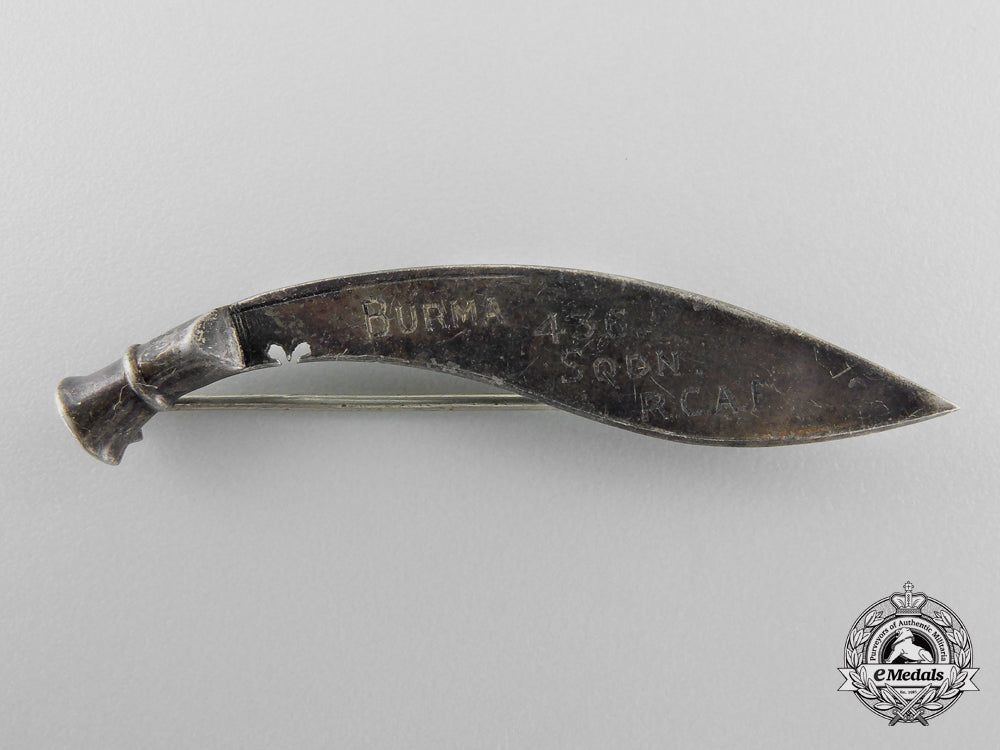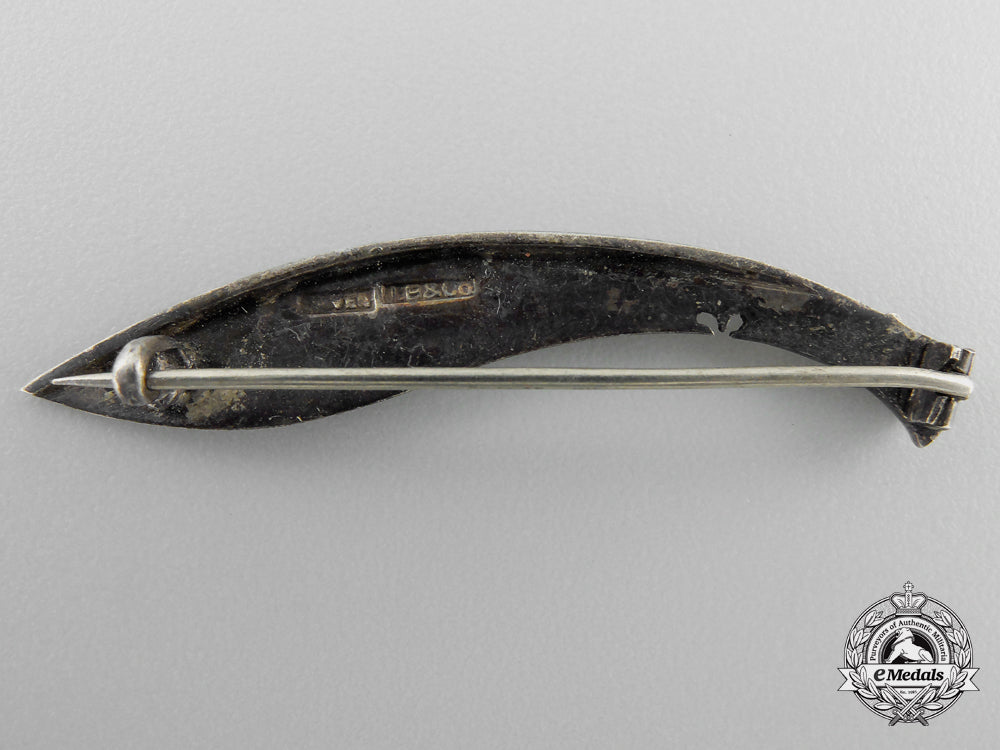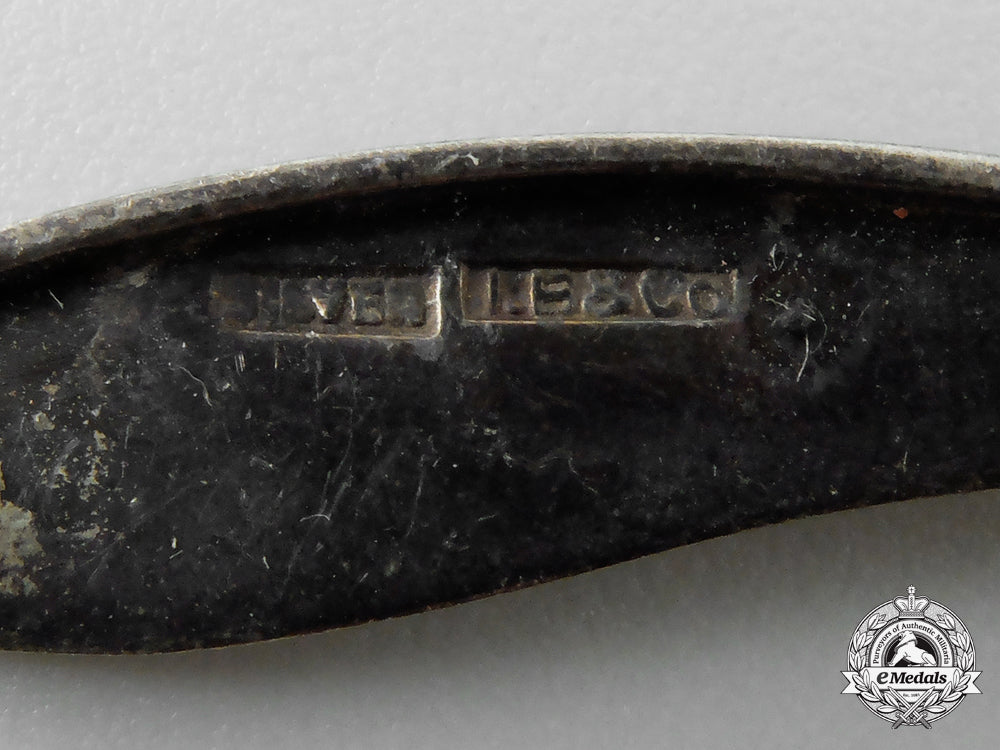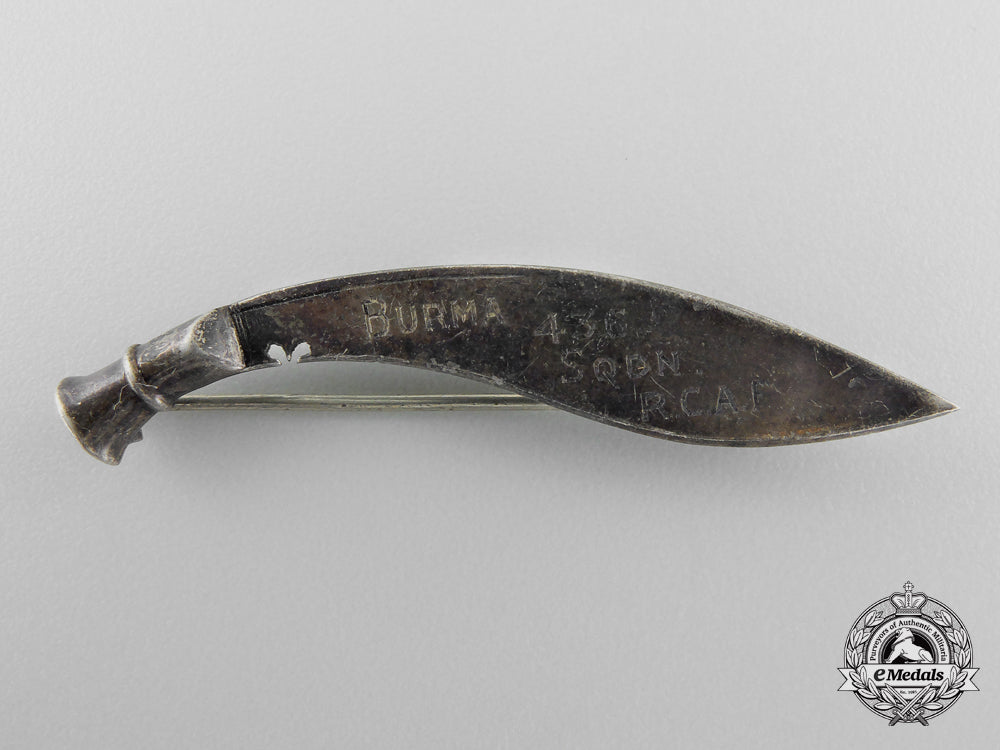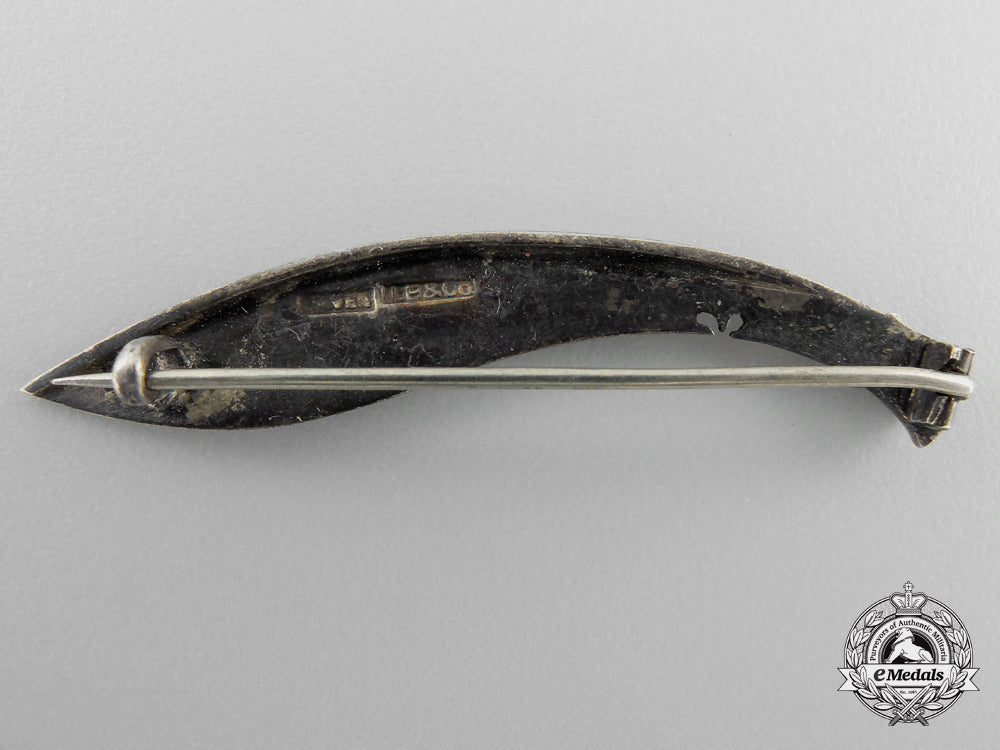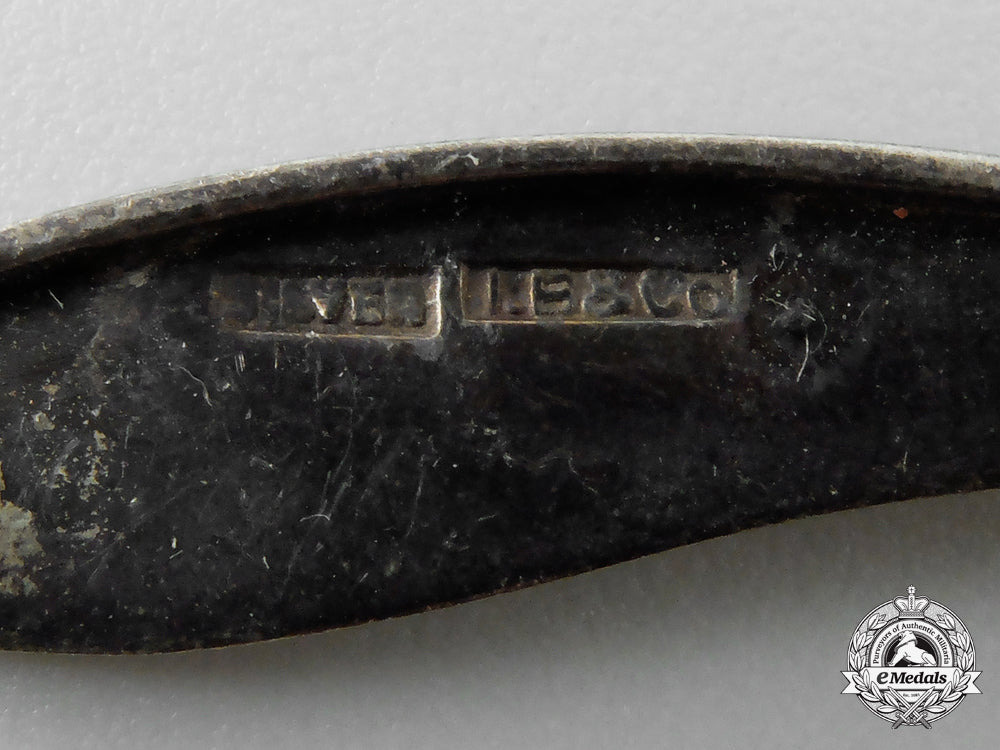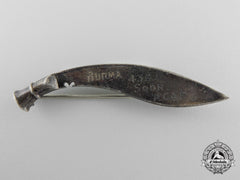
LOADING ...
In response to evolving domestic opinion, eMedals Inc has made the conscious decision to remove the presentation of German Third Reich historical artifacts from our online catalogue. For three decades, eMedals Inc has made an effort to preserve history in all its forms. As historians and researchers, we have managed sensitive articles and materials with the greatest of care and respect for their past and present social context. We acknowledge the growing sentiments put forth by the Canadian public and have taken proactive actions to address this opinion.
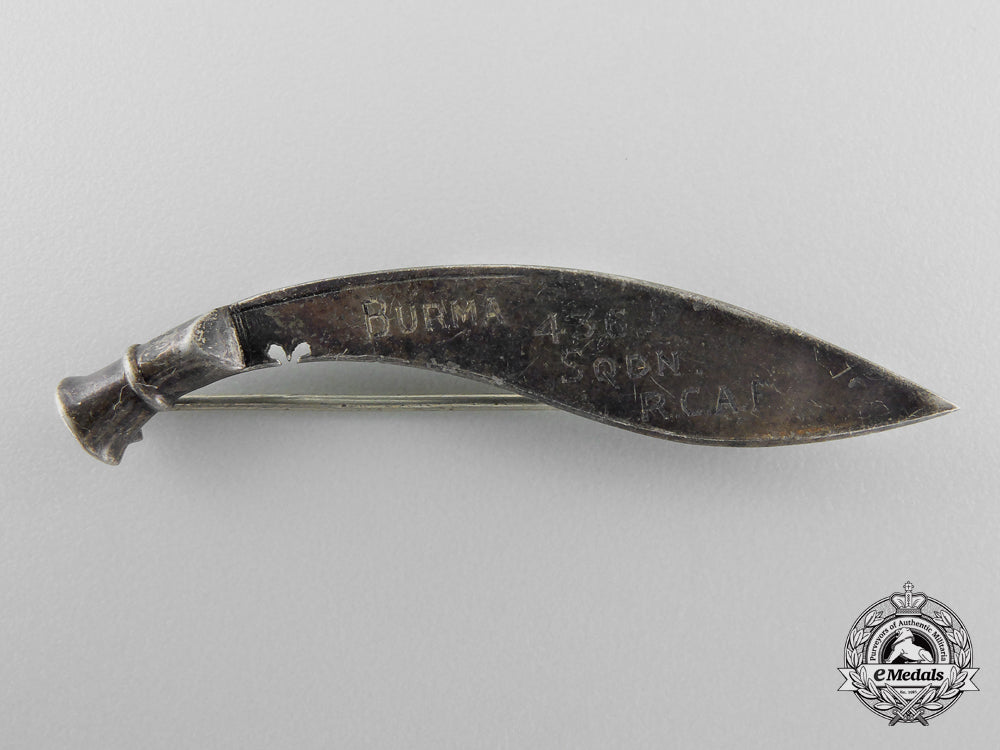
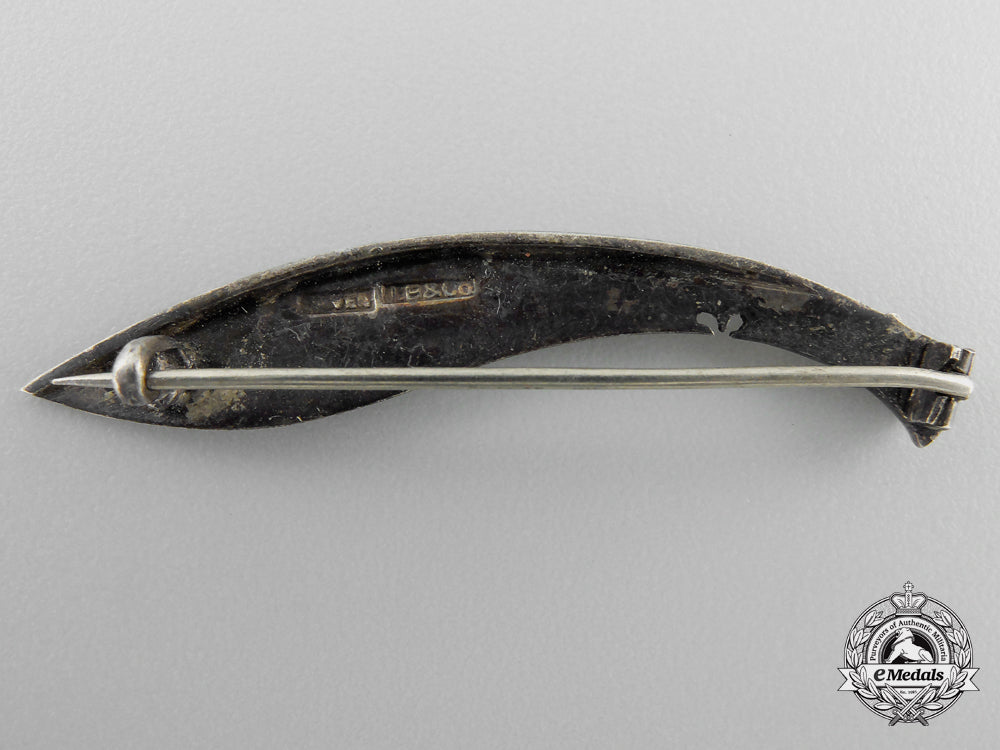
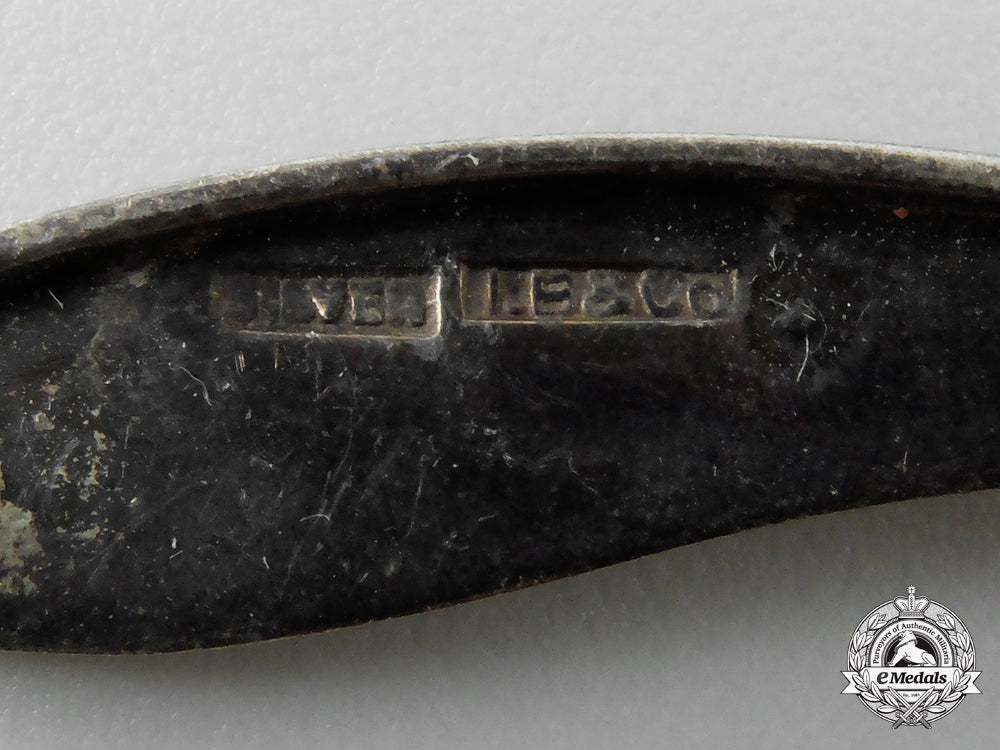
A Second War Burma 436 Squadron, Royal Canadian Air Force Kurki Pin
A Second War Burma 436 Squadron, Royal Canadian Air Force Kurki Pin
SKU: ITEM: C3979
Current Bid:
Your Max Bid:
Bid History:
Time Remaining:
Couldn't load pickup availability
Shipping Details
Shipping Details
eMedals offers rapid domestic and international shipping. Orders received prior to 12:00pm (EST) will be shipped on the same business day.* Orders placed on Canadian Federal holidays will be dispatched the subsequent business day. Courier tracking numbers are provided for all shipments. All items purchased from eMedals can be returned for a full monetary refund or merchandise credit, providing the criteria presented in our Terms & Conditions are met. *Please note that the addition of a COA may impact dispatch time.
Shipping Details
eMedals offers rapid domestic and international shipping. Orders received prior to 12:00pm (EST) will be shipped on the same business day.* Orders placed on Canadian Federal holidays will be dispatched the subsequent business day. Courier tracking numbers are provided for all shipments. All items purchased from eMedals can be returned for a full monetary refund or merchandise credit, providing the criteria presented in our Terms & Conditions are met. *Please note that the addition of a COA may impact dispatch time.
Description
Description
Silver, marked "SILVER" and maker marked "J.B & Co." (J. Boseck & Co., an Anglo-Indian firm in Kolkata, India) on the reverse, "BURMA 436 SQDN. R.C.A.F", 8.3 mm x 50.2 mm, pinback, dark patina, light contact, near extremely fine.
Footnote: The unit was assembled in Gujrat, (then) India on October 9, 1944. Equipped with the C-47 Dakota, 436 Squadron flew its first official mission on 15 January 1945 from Kanglatongbi, Assam, India, when seven Dakotas airlifted 59 tons of supplies for 33 Corps of the Allied 14th Army in Burma. Soon the adopted emblem of the squadron, "Canucks Unlimited," would be seen far and wide in the China-Burma-India (CBI) theatre of operations. According to news reports of the day, "in the first 18 days after W/C Ralph Gordon's RCAF Dakota transport squadron reached its present aircraft complement, it led all Dakota squadrons in tonnage carried to the Mandalay and Irrawaddy front. …To save time the aircrew on the squadron voted to eat dry rations between sorties instead of using time over a cooked meal….The time for an engine change has been cut from three to two days without a loss of efficiency under the direction of F/L H. Webb, Caledonia, Ont., the engineering officer." In April 1945, 436 Squadron was ordered to move its operations from Akyab Island in the Bay of Bengal down the coast to Ramree Island. C-47 KN210 piloted by F.L. Denison was carrying a load of bricks to build ovens to serve the squadron's new home. The weight had been miscalculated and, during the flight, the aircraft could barely maintain altitude. At this point, L.A.C. Art Adams spotted a beached Japanese seaplane. Someone shouted, "Let's get rid of some bricks!".....The door was opened and a couple of low passes were made, during which Art proceeded to throw bricks at the seaplane. No signs of life were seen down below, and it is doubtful whether any damage was actually inflicted. It must, however, be the only case in which bricks were used to bomb the enemy during the war. Belonging to 229 Group, 436 Squadron was part of a RAF-USAF-RCAF force known as "the Combat Cargo Task Force". On August 31, 1945, following cessation of hostilities, the squadron was relocated to RAF Down Ampney, Glouchestershire in the United Kingdom after having logged over 36,000 flight hours and airlifting over 29,000 tons of supplies and 15,000 troops, casualties, and passengers. Although the first Far East Canadian transport squadron to be formed, 436 Squadron was the last to leave for England. According to a Canadian Press Cable story reporting from London on September 20, 1945, W/C Dick Dennison of Winnipeg, "the squadron in the east flew more than 6,000,000 miles and was known as 'Canucks Unlimited'." Following ten months of transport work in post-war Europe, the squadron flew home to Canada and was subsequently disbanded on June 22, 1946.
Description
Silver, marked "SILVER" and maker marked "J.B & Co." (J. Boseck & Co., an Anglo-Indian firm in Kolkata, India) on the reverse, "BURMA 436 SQDN. R.C.A.F", 8.3 mm x 50.2 mm, pinback, dark patina, light contact, near extremely fine.
Footnote: The unit was assembled in Gujrat, (then) India on October 9, 1944. Equipped with the C-47 Dakota, 436 Squadron flew its first official mission on 15 January 1945 from Kanglatongbi, Assam, India, when seven Dakotas airlifted 59 tons of supplies for 33 Corps of the Allied 14th Army in Burma. Soon the adopted emblem of the squadron, "Canucks Unlimited," would be seen far and wide in the China-Burma-India (CBI) theatre of operations. According to news reports of the day, "in the first 18 days after W/C Ralph Gordon's RCAF Dakota transport squadron reached its present aircraft complement, it led all Dakota squadrons in tonnage carried to the Mandalay and Irrawaddy front. …To save time the aircrew on the squadron voted to eat dry rations between sorties instead of using time over a cooked meal….The time for an engine change has been cut from three to two days without a loss of efficiency under the direction of F/L H. Webb, Caledonia, Ont., the engineering officer." In April 1945, 436 Squadron was ordered to move its operations from Akyab Island in the Bay of Bengal down the coast to Ramree Island. C-47 KN210 piloted by F.L. Denison was carrying a load of bricks to build ovens to serve the squadron's new home. The weight had been miscalculated and, during the flight, the aircraft could barely maintain altitude. At this point, L.A.C. Art Adams spotted a beached Japanese seaplane. Someone shouted, "Let's get rid of some bricks!".....The door was opened and a couple of low passes were made, during which Art proceeded to throw bricks at the seaplane. No signs of life were seen down below, and it is doubtful whether any damage was actually inflicted. It must, however, be the only case in which bricks were used to bomb the enemy during the war. Belonging to 229 Group, 436 Squadron was part of a RAF-USAF-RCAF force known as "the Combat Cargo Task Force". On August 31, 1945, following cessation of hostilities, the squadron was relocated to RAF Down Ampney, Glouchestershire in the United Kingdom after having logged over 36,000 flight hours and airlifting over 29,000 tons of supplies and 15,000 troops, casualties, and passengers. Although the first Far East Canadian transport squadron to be formed, 436 Squadron was the last to leave for England. According to a Canadian Press Cable story reporting from London on September 20, 1945, W/C Dick Dennison of Winnipeg, "the squadron in the east flew more than 6,000,000 miles and was known as 'Canucks Unlimited'." Following ten months of transport work in post-war Europe, the squadron flew home to Canada and was subsequently disbanded on June 22, 1946.
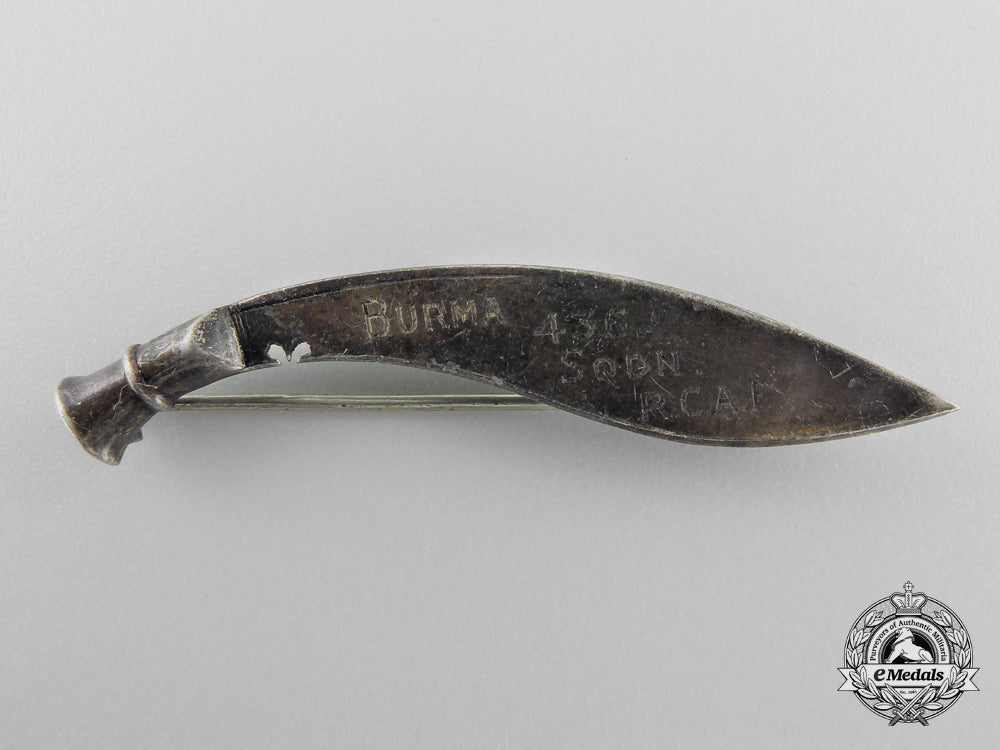
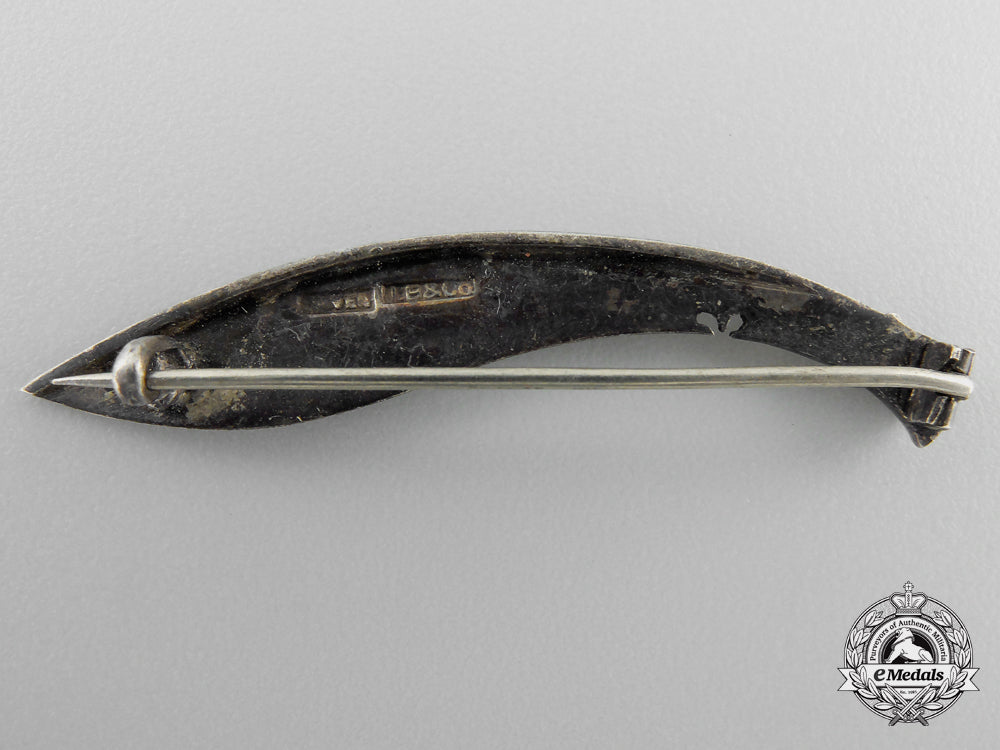
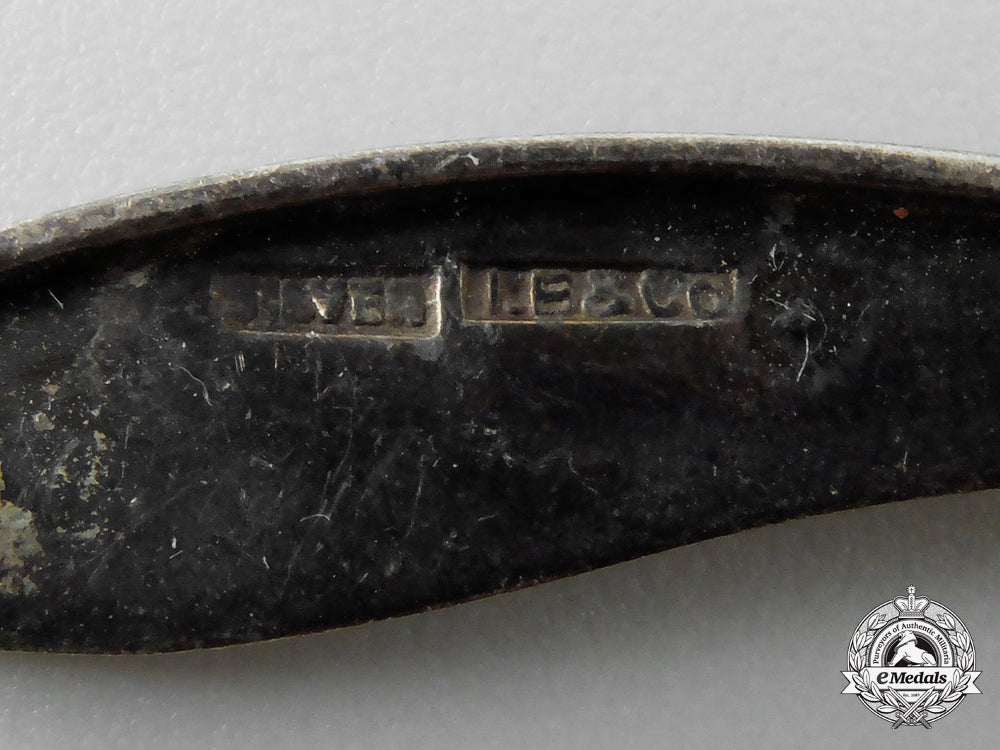
You May Also Like
Spain, Kingdom. A Police General’s Baton, c. 1980
EU23585
Spain, Kingdom. An Order of Isabella the Catholic, Commander in Gold, c.1880
EU23544
Japan, Empire. An Order of the Sacred Crown VIII Class, in Case
W8216
Spain, Franco Period. An Order of Aeronautical Merit, Grand Cross Breast Star
EU23540
Japan, Empire. An Order of the Sacred Treasure, II Class Star in Case
W8217
-
Spain, Kingdom. A Police General’s Baton, c. 1980
EU23585
Add to CartRegular price $405 USDRegular price $0 USD Sale price $405 USDUnit price / per -
Spain, Kingdom. An Order of Isabella the Catholic, Commander in Gold, c.1880
EU23544
Add to CartRegular price $3,000 USDRegular price $0 USD Sale price $3,000 USDUnit price / per -
Japan, Empire. An Order of the Sacred Crown VIII Class, in Case
W8216
Add to CartRegular price $405 USDRegular price $0 USD Sale price $405 USDUnit price / per -
Spain, Franco Period. An Order of Aeronautical Merit, Grand Cross Breast Star
EU23540
Add to CartRegular price $270 USDRegular price $0 USD Sale price $270 USDUnit price / per -
Japan, Empire. An Order of the Sacred Treasure, II Class Star in Case
W8217
Add to CartRegular price $1,050 USDRegular price $0 USD Sale price $1,050 USDUnit price / per
Do you have a similar item you are interested in selling?
Please complete the form and our client care representatives will contact you.
Sell Item